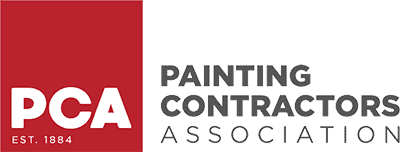Picking the right paint sheen and type isn’t just about color—it affects how your walls look, how long the paint lasts, and how easy it is to maintain.
For homeowners in Tampa, these decisions are even more critical. Our humid climate, salty coastal air, and intense sunlight can take a toll on paint, making durability a key concern. Choosing wisely ensures a beautiful, long-lasting finish.
This guide will break down paint sheens, types, and the best choices for each room in your home. Plus, we’ll share Tampa-specific painting tips to help your home withstand Florida’s unique weather conditions.
Understanding Paint Sheens
What is Paint Sheen?
Paint sheen refers to how much light reflects off a painted surface. The shinier the finish, the more durable and washable it tends to be. But that comes with a tradeoff—high-gloss paints highlight imperfections, while lower sheens help hide them. So, how do you choose the right one? It’s all about balancing appearance, durability, and maintenance to fit your space and Tampa’s unique climate.
Breakdown of Paint Sheens
1. Flat/Matte
Best for: Ceilings, low-traffic rooms, and older homes with wall imperfections.
Pros: Excellent at hiding cracks, dents, and uneven surfaces—perfect for older Tampa homes with textured walls or plaster.
Cons: Not very washable. While it gives a smooth, sophisticated look, it’s not ideal for high-traffic areas or rooms prone to spills. Cleaning flat paint often means repainting instead of wiping down.
2. Eggshell vs. Satin
Though they’re often grouped together, there’s a subtle but important difference.
Eggshell
- Best for: Bedrooms, living rooms, and spaces where a softer, low-luster finish is preferred.
- Pros: Offers a velvety appearance and hides minor imperfections better than satin.
- Cons: More durable than flat paint but still not as easy to clean as higher sheens.
Satin
- Best for: Hallways, kitchens, and bathrooms—especially in humid Tampa homes.
- Pros: Slightly shinier than eggshell and more durable. Holds up better to moisture and frequent cleaning, making it the smarter choice for high-humidity areas.
- Cons: Can show scuff marks in high-traffic areas but is easier to clean than eggshell.
3. Semi-Gloss
Best for: Kitchens, bathrooms, laundry rooms, trim, and doors.
Pros: Highly washable, resists stains, and offers strong moisture resistance—a must in Tampa’s humid climate, where mold and mildew can be a problem. The smoother, less porous surface helps prevent moisture buildup.
Cons: Reflects light, meaning it will highlight wall imperfections. Surface prep is key to getting a smooth finish.
4. High-Gloss
Best for: Cabinets, baseboards, doors, and furniture.
Pros: The most durable and easiest to clean, making it ideal for areas that see a lot of wear and tear.
Cons: Shows every flaw, so proper surface prep is essential. Also, in Tampa’s extreme heat, high-gloss finishes on exterior surfaces (like metal doors or window frames) can amplify temperature-related expansion and contraction, potentially leading to cracking or peeling.
Understanding Paint Types
A. Latex vs. Acrylic vs. Oil-Based Paints
Choosing the right type of paint isn’t just about color—it’s about durability, maintenance, and performance in Tampa’s unique climate. But what’s the difference between latex, acrylic, and oil-based paints?
- Latex Paint: This is a water-based paint that dries quickly, has low odor, and is easy to clean with soap and water. It’s great for interior walls and ceilings.
- Acrylic Paint: Technically a type of latex paint, but with more acrylic resins, making it stronger, more flexible, and resistant to cracking and fading—perfect for exterior walls and high-moisture areas.
- Oil-Based Paint: Once the go-to for trim, doors, and cabinetry, traditional oil-based paints are now harder to find due to VOC restrictions. Instead, alkyd-based paints offer a similar tough, smooth finish with lower VOCs. However, they still require proper ventilation during application.
Wondering which to choose? For exterior projects, acrylic latex is usually the best bet. For trim and cabinets, consider alkyd-based options for a harder, more durable finish.
B. Specialty Paints & Finishes
Tampa’s climate brings its own challenges—humidity, storms, and intense sun. Here are some specialty paints that help your home stay protected:
- Mold-Resistant Paint: High humidity can lead to mold and mildew growth, especially in bathrooms and kitchens. Top picks: Sherwin-Williams Emerald and Benjamin Moore Aura Bath & Spa.
- Stain-Blocking Primers: Essential for covering water stains, smoke damage, or mildew-prone areas. Recommended: Sherwin-Williams Moisture Block.
- Eco-Friendly Paints: If indoor air quality is a priority, consider low-VOC or zero-VOC options like Sherwin-Williams Harmony or Benjamin Moore Natura. These reduce harmful fumes without compromising performance.
Room-by-Room Guide to Sheen and Paint Type
Not all paints are created equal—especially when it comes to sheen. The right finish affects not just appearance but also durability, ease of cleaning, and even how light reflects in a space. Here’s how to choose the best sheen for each room in your home:
Living Rooms – Eggshell or Satin
Your living room is a high-traffic space that should look polished but still feel inviting. Eggshell offers a subtle glow while hiding minor wall imperfections. Want a bit more durability? Satin is slightly shinier and easier to clean, making it a great choice for households with kids or pets.
Bedrooms – Eggshell for Walls, Matte for Ceilings
A bedroom should feel calm and cozy, and that’s where eggshell walls shine—literally, but just a little. It’s soft, wipeable, and doesn’t reflect too much light. For ceilings, go with matte or flat. These finishes help absorb light, making the space feel more relaxing while also concealing ceiling imperfections.
Kitchens – Semi-Gloss for Walls, High-Gloss for Cabinets
Cooking means grease, steam, and the occasional spaghetti sauce splatter. Semi-gloss walls stand up to frequent wiping without looking too shiny. For cabinets, go even glossier—high-gloss finishes resist moisture, stains, and daily wear, making cleanup effortless.
Bathrooms – Semi-Gloss or High-Gloss
With constant humidity and water exposure, bathrooms demand a tough finish. Semi-gloss is the go-to for walls, offering excellent moisture resistance while still looking stylish. For trim, cabinets, and vanities, a high-gloss finish adds extra protection against mold and mildew.
Hallways & Entryways – Satin
These areas take a beating—scuffed shoes, fingerprints, and everyday wear. Satin paint is durable, easy to clean, and slightly more forgiving than high-gloss when it comes to wall imperfections.
Trim & Baseboards – Semi-Gloss or High-Gloss
Trim should stand out against the walls while handling bumps, dings, and dust. Semi-gloss is a classic choice, offering a crisp, polished look without being too reflective. Want a bolder contrast? High-gloss gives an ultra-sleek finish that really pops.
Ceilings – Flat or Matte
Ceilings don’t need to shine. In fact, a flat or matte finish helps hide surface imperfections and uneven textures. It also creates a soft, uniform look, ensuring that the focus stays on your beautifully painted walls.
Tampa-Specific Painting Tips
Painting in Tampa’s climate comes with unique challenges—intense sun, high humidity, and salty air all take a toll on exterior and even interior surfaces. Here’s how to ensure your paint job looks great and lasts as long as possible.
1. Prepping Surfaces for Tampa’s Climate
Before you even think about opening a paint can, surface prep is key. Tampa’s humidity and coastal breezes mean mildew, salt residue, and moisture damage are common.
- Wash away mildew and salt buildup. A mix of water, mild detergent, and a little bleach can help remove mildew before it seeps into the new paint.
- Use a stain-blocking primer on water-damaged areas. If you’ve had leaks or water stains, skipping this step could lead to discoloration bleeding through the new paint.
- Pressure wash exteriors to get rid of grime, pollen, and old chalky paint. A clean surface helps the paint bond properly, preventing peeling and bubbling later.
2. Protecting Your Paint Job from Sun & Humidity
Tampa’s sun is no joke. UV rays break down pigments over time, making colors fade faster—especially darker shades. Humidity can also trap moisture under the paint, leading to bubbling and peeling.
- Choose UV-resistant paints. High-quality acrylic and elastomeric coatings hold up best under the Florida sun.
- Opt for light colors. Lighter shades reflect heat better than dark ones, helping to keep your home cooler and reducing thermal expansion, which can cause cracks.
- Apply paint when humidity is lower. High humidity slows drying time and can lead to an uneven finish.
3. Preventing Mold & Mildew
Tampa’s warm, damp climate is a breeding ground for mold and mildew, especially in bathrooms, kitchens, and shaded exterior walls.
- Use mold-resistant paints with built-in mildewcides. Sherwin-Williams Emerald and Benjamin Moore Aura Bath & Spa are great choices for high-moisture areas.
- Consider anti-microbial additives. If you’re using standard paint, mixing in an anti-microbial additive can help keep mildew at bay.
- Improve ventilation. Even the best mold-resistant paint can only do so much. Proper airflow—whether from fans, vents, or dehumidifiers—helps reduce moisture buildup.
4. Choosing the Best Time to Paint in Tampa
Timing matters more than you think! Paint reacts differently to heat and humidity, which can impact both drying time and adhesion.
- Avoid painting in peak summer heat. When temperatures soar past 85-90°F, paint can dry too quickly, leading to brush marks and uneven coverage.
- Late fall, winter, and early spring offer the best painting conditions. With milder temperatures and lower humidity, paint dries at the ideal rate, creating a smoother, more durable finish.
- Watch the weather forecast. A sudden rainstorm can ruin an exterior paint job if the paint hasn’t fully cured.
Tampa’s climate can be tough on paint, but the right prep and product choices make all the difference. Taking these extra steps ensures your home stays looking fresh—despite the sun, salt, and humidity trying to do otherwise!
Common Mistakes to Avoid When Choosing Paint Sheens & Types
Painting seems straightforward—until you run into peeling, bubbling, or uneven finishes just weeks after your project. Many of these issues stem from choosing the wrong paint sheen or skipping key steps. Here’s how to avoid common pitfalls and ensure a professional-quality result.
1. Skipping Surface Prep
Paint is only as good as the surface it sticks to. Dirt, dust, grease, and old flaking paint create a weak foundation, leading to peeling and premature paint failure.
Solution: Always clean, sand, and prime before painting. If you’re painting over a glossy or oil-based surface, lightly sanding helps the new paint adhere properly.
2. Using the Wrong Sheen
Not all sheens are created equal. A flat or matte finish might look great at first, but in high-traffic areas like hallways and kitchens, it can show smudges and wear quickly.
Solution: Use satin or semi-gloss for areas that need durability and easy cleaning. Flat paint works best on ceilings and low-traffic walls where touch-ups are easy.
3. Painting in Extreme Heat
Tampa’s heat can be brutal on fresh paint. If the temperature is too high, paint dries too quickly, making it harder to blend and leading to an uneven, streaky finish.
Solution: Avoid painting in direct sunlight or temperatures above 85°F. Early mornings or late afternoons in cooler months are ideal for exterior projects.
4. Ignoring Moisture Problems
Painting over damp or humid surfaces is a recipe for disaster. Moisture trapped under paint can cause bubbling, peeling, and mold growth over time.
Solution: Check for leaks, condensation, or existing mold before painting. In high-moisture areas like bathrooms, use mold-resistant paint and ensure proper ventilation.
5. Skimping on Coats
A single thick coat might seem like a shortcut, but it often leads to uneven color, visible brush strokes, and reduced durability.
Solution: Apply multiple thin coats, allowing each layer to dry fully before adding the next. This results in better coverage, richer color, and a longer-lasting finish.
Pro Tips for a Flawless Finish
- Test paint samples in different lighting conditions before committing—natural and artificial light can change how colors appear.
- Invest in high-quality brushes & rollers for a smooth, even application. Cheap tools can leave streaks and bristles behind.
- Apply multiple thin coats instead of one thick layer for a professional, streak-free finish.
- Maintain sheen by cleaning gently with a damp cloth—harsh scrubbing can dull the finish.
Conclusion
Choosing the right paint sheen and type isn’t just about aesthetics—it’s about longevity, maintenance, and adapting to Tampa’s unique climate. Investing in quality paint and proper preparation will ensure your home looks great for years to come.
If you need expert guidance, contact AA Total Painting for professional painting services in Tampa!


